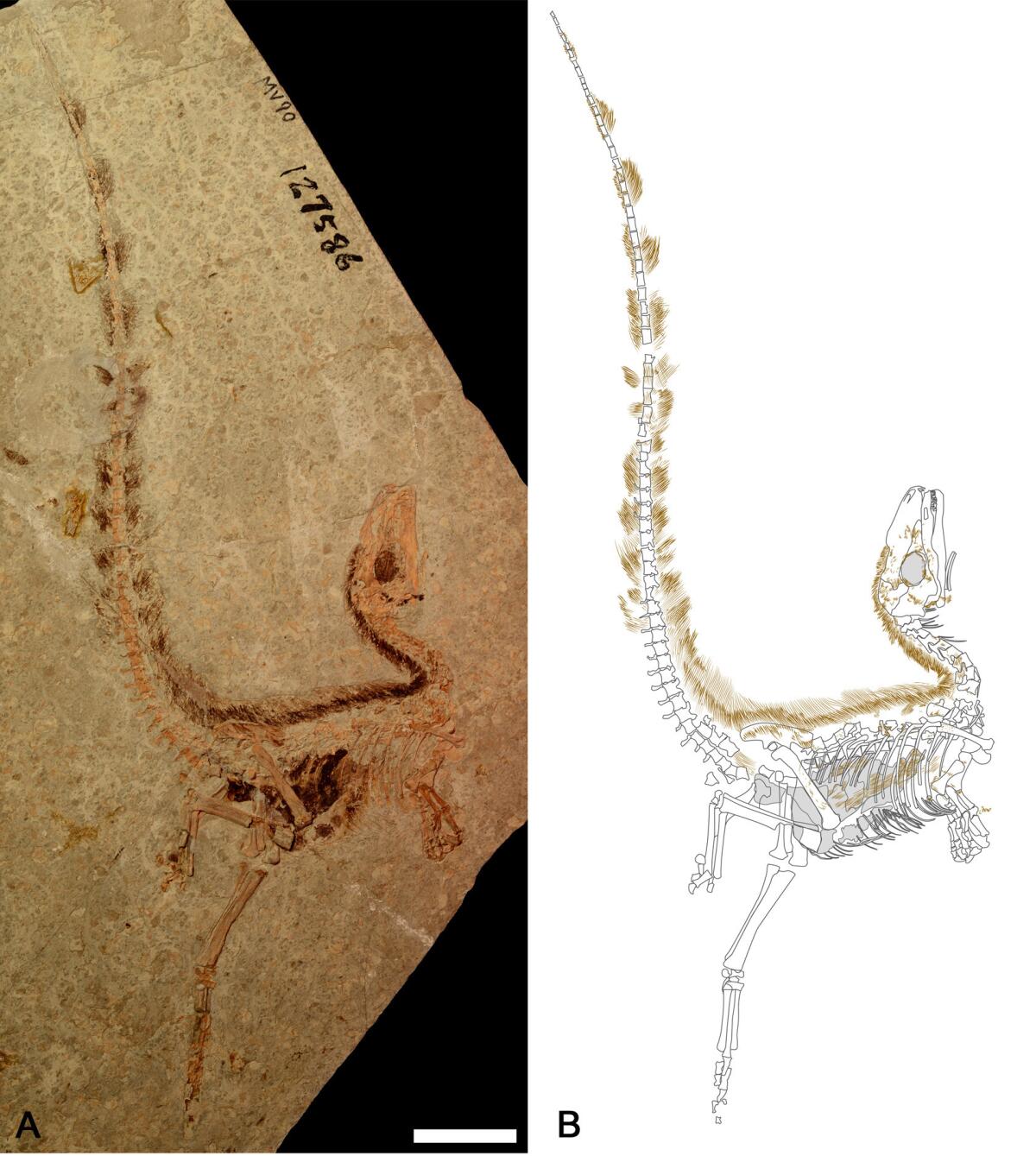Stripes? Spots? Scientists have new way to see what dinosaurs looked like on the outside
- Share via
Scientists studying ancient fossils of a small feathered dinosaur have discovered that it had a bandit’s mask as well as a striped tail, rather like today’s raccoons.
The eye-catching plumage of Sinosauropteryx, described in the journal Current Biology, illuminates the life and behavior of these ancient animals and sheds light on the diversity of the landscapes they inhabited.
“Our results show how reconstructing the color of extinct animals can inform on their ecologies beyond what may be obvious from skeletal remains alone,” the study authors wrote.
Sinosauropteryx was a theropod dinosaur – in the same group as its massive cousin Tyrannosaurus, but much smaller. It lived in the early Cretaceous period, as part of what’s known as the Jehol Biota, a temperate environment in northeastern China that existed from roughly 131 million to 120 million years ago. This dinosaur probably grew no larger than a meter or so from snout to its very long tail, and is known for being the first dinosaur (outside of theropods’ descendants, living birds) to be found with feathers.

These feathers were fuzzy, primitive and lacked structure – nowhere near flight-worthy. But they showed that many dinosaurs were feathered instead of scaled, and prompted scientists to probe what color they were and why dinosaurs had feathers in the first place. Was it to show off to mates? Purely for insulation? Perhaps for camouflage?
Thanks to the melanin pigment preserved on three well-preserved Sinosauropteryx fossils, University of Bristol scientists were able to reconstruct the pattern of dark-hued plumage on the animals’ bodies. (Those areas that did not have melanin remnants were assumed to have light-colored plumage.)
They found that the animals had a “mask” of dark feathers that wrapped over the eyes, and connected over the top of the skull to more dark feathers on its back. At the base of its ringed tail, the bands were thinner and packed closely together; closer to the tip, the bands grew wider and spaced farther apart.
While the dinosaurs’ backs were covered in dark feathers, their bellies were probably white. This appears to have been an example of “countershading,” in which an animal’s coloration counteracts the normal pattern of shadows and brightness created by sunlight.
“A dark dorsum and lighter ventrum helps to mask the three-dimensional shape of the body by reducing self-shadowing and decreasing conspicuousness, thus helping to avoid detection by predators and prey,” the study authors wrote. Since Sinosauropteryx ate smaller animals and needed to avoid being eaten by its larger brethren, such camouflage could have been essential to its survival.
But that countershading pattern depends on the environment — whether an animal lives under direct sunlight on the plains, or in a shady forest, or perhaps by a reflective river. Which one did Sinosauropteryx live in?

To find out, the scientists created three-dimensional models of the dinosaur’s coloration pattern and photographed it under different lighting conditions. They found that the animal was best suited for open, sunny environments – a slight surprise, given that this part of what’s now China was thought to have been a more forested landscape.
“The insight that small theropods like Sinosauropteryx may have inhabited open habitats helps build a clearer picture of the environment in which the Jehol animals lived,” the authors wrote. “Jehol clearly was not only rich taxonomically, but was also likely varied in the habitats available to animals and consisted of a mosaic of environments, which may explain the area’s extraordinary biodiversity.”
Follow @aminawrite on Twitter for more science news and "like" Los Angeles Times Science & Health on Facebook.
MORE IN SCIENCE
New gene-editing technique may lead to treatment for thousands of diseases
How scientists hope to treat diseases by editing our RNA
Growing pains: The oldest trees on Earth ripped themselves apart, fossils show




